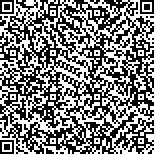下载中心
优秀审稿专家
优秀论文
相关链接
摘要

森林火灾既严重影响森林生态系统的稳定,还威胁到人类生命财产安全。传统监测森林火灾方法,覆盖范围小,难以及时监测小面积火灾。遥感卫星能大范围精确监测火情,提高了监测方法的时效性,但使用单一卫星数据源很容易受到云雨等客观环境因素影响,降低监测的时效性。本文以四川木里藏族自治县“330森林火灾”区域为对象,开展多源卫星遥感数据对小范围火灾联合监测的研究。首先,充分挖掘高分四号高时空分辨率和中红外火烧敏感波段优势,联合烟幕、温度和植被指数时序变化确定火烧时间与位置;然后,使用Sentinel-2数据监测不同火烧区域光谱信息;接着,使用Sentinel-2数据提取dNBR(differenced Normalized Burn Ratio),提出了基于最大类间方差算法(OTSU)分步骤确定不同程度火烧迹地与面积的方法;最后,建立Sentinel-1A极化比值PR(Polarization Ratio)和NDVI之间关系,利用微波雷达突破云雨限制。结果表明:(1)高分四号联合IRS(InfraRed Scanner)和PMS(Panchromatic Multispectral Sensor)能够实时监测小范围火灾;(2)根据火点位置,确定火灾蔓延期间NDVI下降(由0.7降低至0.25),确定起火时间(3月30日);(3)火灾区域与未受灾区,以及不同类型火烧迹地之间的光谱在490—2200 nm范围存在差异;(4)基于OTSU算法自动确定阈值,确定林地损失面积41.56公顷(dNBR=0.35),精度达94.67%,提取林地过火未损失面积66.56公顷(dNBR=0.10),精度达90.94%,林地损失区域基本符合实际调查结果;(5)火灾前后极化比值由6.6 dB升高至10.8 dB,NDVI与PR经线性回归,R 2=0.58,验证R 2=0.50。联合多源卫星监测森林火灾,能提高森林火灾监测的时效性,避免了云雨等复杂环境的影响。研究成果能为小火点的及时识别和灾害评估提供参考,其应用可为林火应急响应提供技术支撑。
Forest fires seriously damage the stability of forest ecology and threaten the safety of human lives and properties. Traditional methods cannot detect fire disasters in time because of their limited observation region and time window. Remote sensing can accurately and continuously detect fire disasters in a large area with improved detection efficiency. Meteorological and polar satellites are mainly used to detect forest fires. However, these satellites cannot detect small fire scars and deal with the influence of cloud and rain. In this study, multisensor remote sensing data were combined to monitor the forest fire spots and progress in Muli Tibetan Autonomous County of Sichuan Province since March 30, 2019.First, we located the fire spots and their time of occurrence using the Chinese Gaofen-4 (GF-4) satellite. This geostationary satellite has a PMS (Panchromatic Multispectral ) camera with a high spatial (50 m) resolution and a mid-infrared sensor (IRS, 400 m) that is sensitive to abnormally high temperatures. Second, we computed the spectral difference between burning and unaffected forest stands using Sentinel-2. Third we classified the fire scars on the basis of Sentinel-2 using the OTSU algorithm to set the threshold of differenced Normalized Burn Ratio (dNBR). Finally, we used the synthetic aperture radar data from Sentinel-1A to relate Normalized Difference Vegetation Index (NDVI) to Polarization Ratio (PR). The results show that: (1) The location of fire spots can be accurately determined using the IRS and PMS data from GF-4. (2) The burning time is March 30 using the PMS data from GF-4 by combining the fire spot location and the sharp reduction in NDVI (from 0.7 to 0.25). (3) A difference is observed in the spectral curves of among the burning forest stands, unaffected areas, and different types of burned areas of Sentinel-2 data at 490 and 2200 nm. (4) The total area of damaged fire scars is 41.56 hm2, with 94.67% accuracy using the dNBR of 0.35 as the threshold from Sentinel-2 derived dNBR map. Lightly damaged fire scars are also classified (66.56 hm2, 90.94%). (5) The PR from Sentinel-1A data increases from 6.6 dB to 10.8 dB after burning. NDVI is linearly related to PR (R 2=0.58 for fitting and 0.50 for verification). The above results agree well with the fire spot location and area from local field reports, and the burning time error is less than 12 h. This study provides an efficient method that can ignore the influence of cloud and rain and other complex environments to monitor forest fires. Many details can be obtained to capture the fire progress when GF-4 is used in monitoring. This study provides a reference for the identification of small fire disasters after their occurrences. The research methods and results can provide technical support for forest fire emergency.

